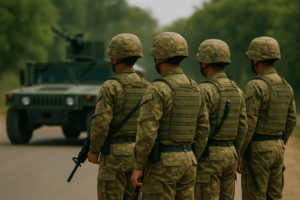Uniforms, whether in schools, workplaces, or other institutions, have both advantages and disadvantages.
A uniform is a standardized set of clothing worn by members of an organization, institution, or group to distinguish them from others. Uniforms serve various purposes depending on the context in which they are used. Here are some common types of uniforms and their purpose.
First and foremost is the school uniform that is worn by students in educational institutions, school uniforms are designed to promote a sense of unity, equality, and discipline among students. They often include specific items such as shirts, ties, blouses, skirts, pants, and sometimes jackets.
Second is the workplace Uniforms: Many workplaces, especially in industries such as healthcare, hospitality, retail, and public services, require employees to wear uniforms. Workplace uniforms contribute to a professional appearance, brand consistency, and sometimes safety (e.g., high-visibility uniforms for construction workers).
Moreover, military uniforms are worn by members of the armed forces and are designed to denote rank, branch of service, and other important distinctions. They are often tailored for specific functions, such as combat or ceremonial occasions.
Yet another category of uniform is the athletes wear uniforms that typically include jerseys or shirts, shorts or pants, and sometimes additional accessories like hats or socks. Sports uniforms often display team colors, logos, and player numbers for easy identification. Moreover, healthcare professionals, such as doctors and nurses, commonly wear medical scrubs. These uniforms are designed to be comfortable, easy to clean, and distinguishable within a medical setting.
In correctional facilities, inmates are typically required to wear uniforms. These uniforms serve practical purposes, such as ease of identification, and may also contribute to a sense of discipline within the institution.
Advantages of Uniforms
Promotes Equality: Uniforms can create a sense of equality among individuals, as everyone is dressed the same way, regardless of their socio-economic background.
Fosters a Sense of Belonging: Wearing a uniform can instill a sense of belonging and pride in being part of a particular group or institution.
Reduces Peer Pressure: Uniforms can reduce the pressure on individuals to wear trendy or expensive clothing, thus minimizing the influence of fashion trends and promoting a focus on other qualities.
Enhances Safety and Security: In some contexts, uniforms can enhance safety and security by making it easier to identify individuals who belong to a particular institution or organization.
Professional Appearance: In workplaces, uniforms contribute to a professional and cohesive appearance, creating a consistent image for the organization.
Reduces Distractions: Uniforms can minimize distractions related to clothing choices, allowing individuals to focus on their tasks or studies without being preoccupied with personal appearance.
Cost Savings: Uniforms can be cost-effective for individuals and parents, as they eliminate the need to purchase a diverse wardrobe for different occasions.
Easier Morning Routines: Having a uniform simplifies the process of getting ready in the morning, reducing the time and effort spent on choosing outfits.
Disadvantages of Uniforms
Limits Individual Expression: Uniforms can stifle individuality and self-expression, as individuals are required to conform to a standardized dress code.
Expense: In some cases, the cost of purchasing uniforms can be a financial burden for individuals or families, especially if they are required to buy multiple sets.
Doesn’t Address Root Issues: Critics argue that uniforms do not address the underlying issues related to behavior or academic performance and may merely serve as a superficial solution.
Resistance and Unhappiness: Some individuals may feel uncomfortable or resistant to the idea of wearing a uniform, leading to unhappiness and potential issues with compliance.
Not Applicable in All Settings: Uniforms may not be suitable or necessary for all environments, and imposing a dress code may seem unnecessary in certain contexts.
Maintenance Challenges: Keeping uniforms clean and well-maintained can be a challenge, particularly in settings where individuals engage in messy or physical activities.
Potential for Uniformity Issues: Poorly designed or overly restrictive uniforms may lead to issues related to discomfort, impracticality, or resistance from those required to wear them.
Limited Personal Expression: Uniforms can limit personal expression through clothing choices, which may be particularly relevant in creative fields or environments that value individuality.
Ultimately, the decision to implement uniforms depends on the specific goals and values of the institution or organization, and the potential advantages and disadvantages should be carefully considered in that context.
📍 English Language Educator | Blogger & Content Strategist | 7+ Years in Educational Blogging
Nosheen Bashir is a dedicated English teacher and experienced blogger with over seven years of expertise in content creation and educational writing. Passionate about language, literature, and effective communication, she combines her teaching experience with blogging skills to create insightful, research-backed content that helps learners and educators alike.
🔹 Expertise & Achievements:
✔ English Language Education: A skilled educator with years of experience in teaching English grammar, literature, and communication skills to students of varying levels.
✔ Educational Blogging: Running a successful blog for 7+ years, delivering well-structured, engaging content on language learning, writing techniques, and academic success.
✔ SEO & Content Strategy: Specializes in creating high-ranking, authoritative articles that follow Google’s EEAT principles, ensuring content that is both informative and search-friendly.
✔ Student-Centric Approach: Committed to making English easier, engaging, and accessible, helping readers and students improve their language proficiency.
🚀 With a passion for teaching and writing, Nosheen Bashir is dedicated to crafting educational content that empowers students, teachers, and language enthusiasts worldwide.








